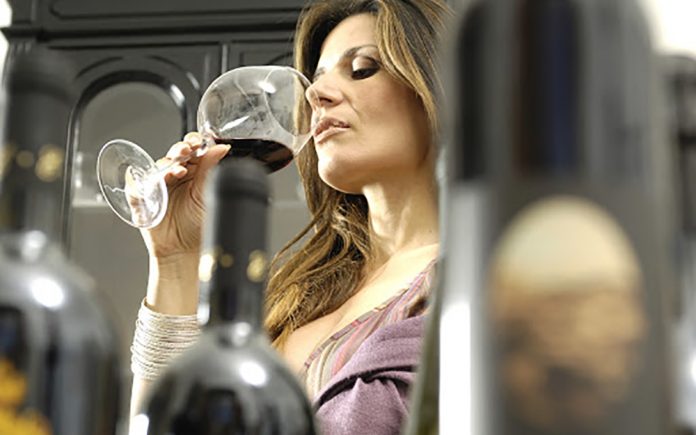
By Rick Riozza
For those of you who need a little break from the latest breaking news on the Coronavirus front, I’m offering a little quick wine quiz so to keep the wine mind abreast. As a shout-out to The Juice at LocalWineEvents.com, its founder and CEO Eric V. Orange, and, Joe Roberts’ 1WineDude.com, we’ve gleaned from The Juices’ wine quiz version.
So grab your favorite glass of wine and join in. For your mental convenience sake, we’ve placed the answers after the full set of questions. And now, the game’s afoot!
- Before the pandemic intruded into our line-up of articles, you’ll remember we did a column titled, “The Joys of Sekts”, (coachellavalleyweekly.com/the-joys-of-sekts) where we discussed the sexy sparklers of Germany, and, even discussed some of the German wine trade. So, here is a question: True or False: Germany imports the most liters of wine per person annually than any other country in the world.
- Recently we recommended the Catalonian Gran Sello Brut Rosé, one of the new lines of Spanish sparklers out that is so tasty and so inexpensive ($7.99). However, many of you vino lovers are buying the Spanish Tempranillo, grown in the Rioja region, which is also reasonably priced. Try this question out. True or False: Rioja wine sales are dominated by red wines?
- C. For you kiwi Sauvignon Blanc/Pinot Noir fans, Which New Zealand wine region produces the second most volume of wine grapes harvested in the country? Central Otago, Gisborne, Hawkes Bay, or Marlborough? (Clue—no one should pick Marlborough; don’t we see that printed on every other kiwi label?!)
- Okay—time for you Italian wine lovers to step up (I mean, don’t I treat you popoli wonderfully with all the Italian themed wine articles we publish for you?) True or False: The pomace that remains after pressing grapes for Amarone is then used in the production of Ripasso Valpolicellas?
- E. Most of you loyal readers know that I go on—ad nauseum, about how I love full-on tannins in my Cabs; and, as well in my red blends—where most folks like red blends for a smooth ride without the jerky tannins jumping about. How about this question: Where does tannin come from in a wine? a) barrels b) pits c) stems d) a, b, & c.
- Now let’s find out what the Francophiles can figure out. True or False: In Reuilly, in France’s Loire Valley, the use Pinot Gris is not permitted in its rosé wines?
- Well—while we’re at it, True or False: In the entire world, the U.S. imports the most Beaujolais Nouveau from France?
- All right—let’s get back home to California wine country. Which Sonoma vineyard is home to some of the oldest Semillon plantings in all of California? Dutton Ranch, Monte Rosso, Fort Ross, or Alexander’s Crown?
- True or False: In the 1880s, consumers in Europe and America were drinking nearly two million gallons annually of wine made in Missouri? (Show us the answer!)
Answers:
- False. Germans import an impressive 17.5 liters of wine per person, but they don’t take the number one global spot. That honor goes to Belgium, which imports over 26.3 liters of wine per person each year. (And you thought they just had mayonnaise with their fries.)
- True. Red wine comfortably dominates the total volume of Rioja wine sold globally. While white and rosé wines are also made there, a whopping 87% of all Rioja wines sold are red.
- Hawke’s Bay. Marlborough is New Zealand’s highest production wine area, accounting for 75% of the country’s wine grape harvest annually. Hawke’s Bay takes (a distant) second place, generating 12% of New Zealand’s wine grape harvest each year.
- True. Amarone, one of Italy’s great expensive wines is produced by drying grapes, and the grape pomace left over from the winemaking process is put to further use. It is then added to batches of Valpolicella, in a process called ripasso (“repassed”), adding additional alcohol, flavor, and complexity to the Valpolicella wines. So, the next time you’re at Trader Joe’s and see a “Ripasso Valpolicella” you’ll remember it as a “baby Amarone” and a good buy at around $15.
- d) a,b,& c Tannin is a natural preservative and is one of the man components that give wine its longevity. It comes from skins, pits and stems of the grapes. Another source of tannin is wood, such as the French oak barrels in which some wines are aged or fermented. Generally, red wines have a higher level of tannin than whites because red grapes are usually left to ferment with their skins.
- False. Reuilly produces about sixteen thousand gallons of rosé wine per year, and both Pinot Gris and Pinot Noir grapes may be used.
- False. The United States imports about 1.8 million bottles of Beaujolais Nouveau annually, making it number two on the list of Beaujolais Nouveau importing nations. Taking the top spot is Japan! That nation seems to love its Gamay, importing nearly 8 million bottles of Beaujolais Nouveau each year.
- Monte Rosso. Named after “red earth,” the Monte Rosso vineyard (situated on the Southwest side of the Mayacamas mountain range) was planted in 1886 with Zinfandel and Semillon. Some of those vines are still producing fruit today, making the vineyard home to some of the oldest producing Semillon vines in California. The fruit is currently used as a blending component for Louis M. Martini’s Sauvignon Blanc.
I. True. German settlers established the town of Hermann near the Missouri River in 1837. The land proved too difficult for farming most crops other than grapes, which thrived there. By 1850 Hermann’s wineries were producing over 10,000 gallons of wine per year. By the 1880s, the town was home to over 60 wineries producing nearly two million gallons of wine each year for domestic and European consumption.
How’d you do? Try it again for a better score! Be Safe! Cheers to you all!










































